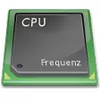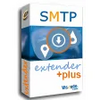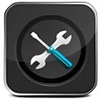A utility tool for your Sidebar that gives you CPU and system usage information
A utility tool for your Sidebar that gives you CPU and system usage information
Vote: (8 votes)
Program license: Free
Developer: Bushin SOFTWARE
Version: 31.5
Works under: Windows
Vote:
Program license
(8 votes)
Free
Developer
Version
Bushin SOFTWARE
31.5
Works under:
Windows
Pros
- Real-time CPU and RAM monitoring across all cores and memory types
- Historical data graphs for performance analysis over time
- Core temperature tracking with CoreTemp integration
- Direct access to Task Manager or Resource Monitor
- Highly customizable interface
- Support for multiple languages
Cons
- Reliance on an additional program (CoreTemp) to monitor CPU temperatures
- May be overwhelming for casual users due to the depth of information provided
A Comprehensive Glimpse at PC Health with System Monitor II
System Monitor II is a gadget for Windows that offers a detailed view of a computer's health in real time. As a tool that caters to power users and professionals, it provides valuable insights into the performance and usage of the system's central processing unit (CPU) and random-access memory (RAM), alongside additional functionality and customization options.
Detailed System Metrics at a Glance
The utility showcases near real-time statistics for system resources. It primarily focuses on CPU usage across all cores, with support for systems housing up to 24 CPU cores. This allows for a comprehensive monitoring of modern multi-threaded processors and server-grade CPUs. Each core's load is neatly displayed, giving users the ability to pinpoint over-utilization on a per-core basis.
Beyond core usage, System Monitor II details the computer's memory footprint thoroughly. It presents data for physical RAM usage, as well as usage of the page file and the total memory footprint, which includes virtual memory. This can be particularly helpful when diagnosing performance bottlenecks or when assessing the workload of memory-intensive applications.
Historical Data and Temperature Tracking
Understanding system performance over time is crucial, and System Monitor II includes historical graphs for both CPU and RAM usage. These retrospective visuals help identify trends and sporadic spikes that may influence system stability and performance.
For those keen on maintaining hardware longevity and ensuring thermal efficiency, System Monitor II can display core temperatures. However, this feature operates in conjunction with the CoreTemp application running in the background. By monitoring the core temperatures, users are immediately aware of potential thermal throttling or unsafe operating conditions.
Leveraging Additional Tools and Features
System Monitor II isn’t just about displaying data; it also allows users to take action. By double-clicking on the gadget, users can swiftly access the Task Manager or Resource Monitor. This offers an efficient pathway to terminate resource-hungry applications or services that might be hindering the system's performance.
Customization and Support
While some monitoring tools might offer rigid interfaces, System Monitor II stands out with its highly configurable interface. Users can tweak the gadget's appearance to blend with their desktop environment or to highlight specific metrics they consider paramount.
Additionally, the software offers multi-language support, accommodating a global user base. Available languages include Ukrainian, Russian, Portuguese Brazilian, Spanish, Dutch, German, Romanian, Turkish, and Chinese (both Simplified and Traditional), to name a few.
Conclusion
System Monitor II is an extensive tool for those who require real-time and historical data on their system's performance. Its ability to provide deep insights into CPU and RAM usage, coupled with direct actions like launching Task Manager, culminate in a powerful gadget for system oversight. It could, however, benefit from a more streamlined way to monitor core temperatures without the need for additional software.
Pros
- Real-time CPU and RAM monitoring across all cores and memory types
- Historical data graphs for performance analysis over time
- Core temperature tracking with CoreTemp integration
- Direct access to Task Manager or Resource Monitor
- Highly customizable interface
- Support for multiple languages
Cons
- Reliance on an additional program (CoreTemp) to monitor CPU temperatures
- May be overwhelming for casual users due to the depth of information provided




